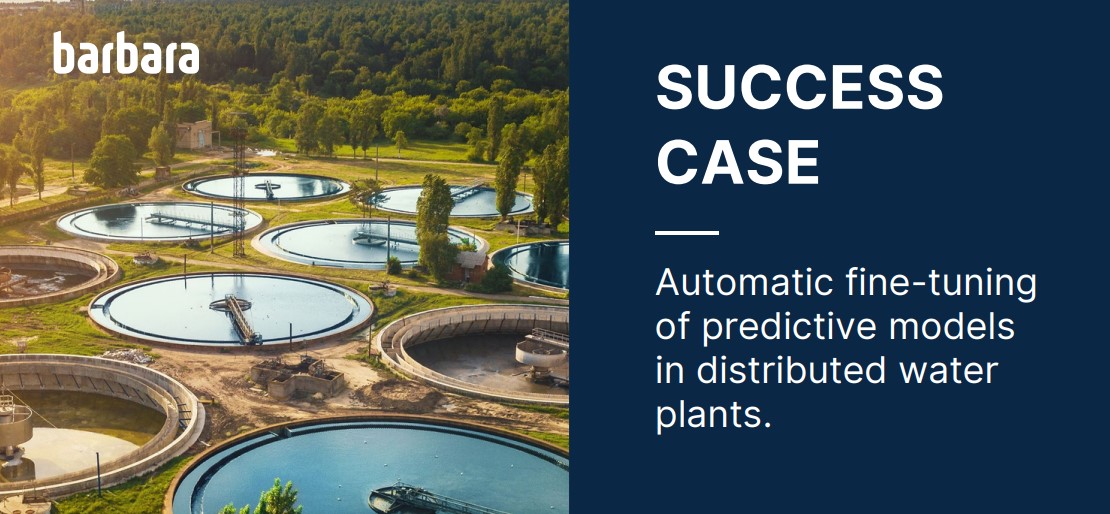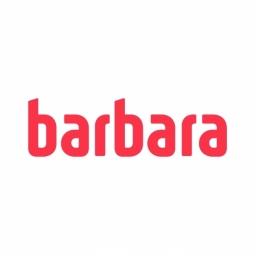
技术
- 平台即服务 (PaaS) - 边缘计算平台
适用行业
- 石油和天然气
- 公用事业
适用功能
- 维护
用例
- 边缘计算与边缘智能
服务
- 软件设计与工程服务
客户
阿西奥娜
关于客户
ACCIONA 是一家全球性集团,致力于开发和管理基础设施可持续解决方案,包括水、特许权、建筑、服务和可再生能源。该公司在水处理领域处于领先地位,参与设计、建设和运营各种水处理厂。其中包括饮用水处理厂、水净化厂、废水处理厂、反渗透海水淡化厂和水回用三级处理厂。 ACCIONA 特别强调为城市提供服务。
挑战
ACCIONA 花费了大量时间和资源在实验室中手动检测水样以确定化学物质浓度。由于获得这些结果需要时间,因此它们往往已经过时且不可靠。这导致了
与化学品供应和监管处罚相关的额外成本。
通过在每个海水淡化厂实施实时优化的机器学习控制算法, ACCIONA 能够最大限度地减少活性化学品的使用,消除相关的监管处罚,并提供高效的边缘基础设施来实施预测性维护、能源效率、感知、优化或强化学习。
解决方案
ACCIONA 旨在实现以下目标:
- 精确控制监测变量:该算法能够预测水中化学元素的值,而这些化学元素只能通过实验室分析才能检测到。通过持续监测相关参数,ACCIONA 旨在实现对这些变量的更精确控制。
- 通过优化试剂剂量控制回路降低成本ACCIONA 旨在最大限度地降低重化学品的使用成本,从而节省罚款。
- 将解决方案扩展到全球所有工厂。
为了实现这些目标,ACCIONA 需要一个能够:
- 有效地从不同的传感器、机器和设备获取数据。
- 安全地存储和管理他们的所有数据。
- 轻松部署他们的人工智能模型。
- 根据环境变量自动调整算法。
- 对应用程序和设备的整个生命周期进行远程集中监控和维护。
Barbara 的工业边缘人工智能平台在实时部署、监控和编排算法方面发挥了重要作用,同时符合最高的网络安全标准(IEC62443-4-2 安全级别 1 标准)。
收集的数据
Water Quality
运营影响

Case Study missing?
Start adding your own!
Register with your work email and create a new case study profile for your business.
相关案例.

Case Study
Taking Oil and Gas Exploration to the Next Level
DownUnder GeoSolutions (DUG) wanted to increase computing performance by 5 to 10 times to improve seismic processing. The solution must build on current architecture software investments without sacrificing existing software and scale computing without scaling IT infrastructure costs.

Case Study
IoT Solutions for Smart City | Internet of Things Case Study
There were several challenges faced: It is challenging to build an appliance that can withstand a wide range of voltage fluctuations from as low at 90v to as high as 320v. Since the device would be installed in remote locations, its resilience was of paramount importance. The device would have to deal with poor network coverage and have the ability to store and re-transmit data if networks were not available, which is often the case in rural India. The device could store up to 30 days of data.

Case Study
Automation of the Oguz-Gabala-Baku water pipeline, Azerbaijan
The Oguz-Gabala-Baku water pipeline project dates back to plans from the 1970’s. Baku’s growth was historically driven by the booming oil industry and required the import of drinking water from outside of the city. Before the construction of the pipeline, some 60 percent of the city’s households received water for only a few hours daily. After completion of the project, 75 percent of the two million Baku residents are now served around the clock with potable water, based on World Health Organization (WHO) standards. The 262-kilometer pipeline requires no pumping station, but uses the altitude differences between the Caucasian mountains and the capital to supply 432,000 m³/d to the Ceyranbatan water reservoir. To the people of Baku, the pipeline is “the most important project not only in 2010, but of the last 20 years.”

Case Study
GPRS Mobile Network for Smart Metering
Around the world, the electricity supply industry is turning to ‘smart’ meters to lower costs, reduce emissions and improve the management of customer supplies. Smart meters collect detailed consumption information and using this feedback consumers can better understand their energy usage which in turn enables them to modify their consumption to save money and help to cut carbon emissions. A smart meter can be defined in many ways, but generally includes an element of two-way communication between the household meter and the utility provider to efficiently collect detailed energy usage data. Some implementations include consumer feedback beyond the energy bill to include online web data, SMS text messages or an information display in consumers’ premises. Providing a cost-effective, reliable communications mechanism is one of the most challenging aspects of a smart meter implementation. In New Zealand, the utilities have embraced smart metering and designed cost effective ways for it to be implemented. The New Zealand government has encouraged such a move to smart metering by ensuring the energy legislation is consistent with the delivery of benefits to the consumer while allowing innovation in this area. On the ground, AMS is a leader in the deployment of smart metering and associated services. Several of New Zealand’s energy retailers were looking for smart metering services for their residential and small business customers which will eventually account for over 500,000 meters when the multi-year national deployment program is concluded. To respond to these requirements, AMS needed to put together a solution that included data communications between each meter and the central data collection point and the solution proposed by Vodafone satisfied that requirement.

Case Study
Remote Wellhead Monitoring
Each wellhead was equipped with various sensors and meters that needed to be monitored and controlled from a central HMI, often miles away from the assets in the field. Redundant solar and wind generators were installed at each wellhead to support the electrical needs of the pumpstations, temperature meters, cameras, and cellular modules. In addition to asset management and remote control capabilities, data logging for remote surveillance and alarm notifications was a key demand from the customer. Terra Ferma’s solution needed to be power efficient, reliable, and capable of supporting high-bandwidth data-feeds. They needed a multi-link cellular connection to a central server that sustained reliable and redundant monitoring and control of flow meters, temperature sensors, power supply, and event-logging; including video and image files. This open-standard network needed to interface with the existing SCADA and proprietary network management software.




